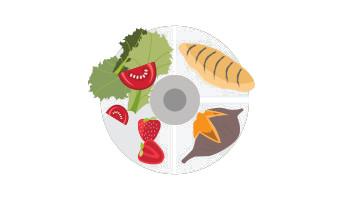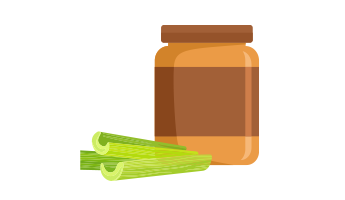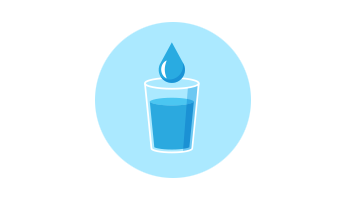Breadcrumb
- Boston Children's fit kit
- Nutrition
Why is nutrition important for kids?
Good nutrition is important for healthy growth and development. Nutritious foods that are part of a balanced diet include vegetables, fruits, proteins, beans, whole grains, and healthy fats. Eating nutritious foods can give your child more energy, reduce their cravings, lower their blood sugar levels, help them focus, and improve their overall health.
Unfortunately, as lifestyles have changed, many children are eating fewer nutritious foods and many more added sugars. Added sugars aren’t just in candy and soda. They’re also in many foods and drinks, including cereal, yogurt, bread, and sports drinks.
Please note
This content is best viewed in a browser other than Safari
How can you boost your family’s nutrition?
Follow the links below to learn how to make nutrition part of your family’s daily life.
What is the blood sugar rollercoaster?
Some carbs break down into sugar quickly after you eat them. These are called high-glycemic carbs. Examples include white potatoes, sugary beverages, most breads and breakfast cereals, and white rice."
The problem with high-glycemic carbs is that they make your blood sugar go up and down too fast — you may get a burst of energy, but pretty soon your energy will crash. This sharp rise and fall is often called the "blood sugar rollercoaster": it can leave you feeling tired, hungry, and irritable soon after eating.
In contrast, low-glycemic carbs break down slowly and give your body a steady stream of energy. Examples include non-starchy vegetables and fruits.
Watch the video below to learn more about the blood sugar roller coaster.
Which carbs provide the most lasting energy?
Click the circles in the traffic light to learn about the different types of carbs
Click the circles in the traffic light to learn about the different types of carbs
Red/stop and think foods
Avoid or limit these high-glycemic carbs:
- White potato products (including French fries)
- Juices and other sugary beverages)
- Most white breads and breakfast cereals
Yellow/be careful foods
Use portion control when eating these moderate-glycemic carbs:
- Starchy vegetables (such as butternut squash and green peas)
- Dried fruits
- Minimally processed whole grains (such as stoneground breads and pasta)
- Beans (such as garbanzo beans, kidney beans, and lentils)
Green/go foods
Eat plenty of these low-glycemic carbs:
- Non-starchy vegetables (such as carrots, broccoli, collard greens, mushrooms, peppers, spinach, tomatoes, and zucchini)
- Fruits (such as apples, berries, grapes, oranges, peaches, and pears)
- Beans (such as garbanzo beans, kidney beans, and lentils)
What are other sources of energy in food?
In addition to carbohydrates, your body also gets energy from proteins and from fats. Combining low-glycemic carbs with proteins (like eggs, cheese, yogurt, fish, chicken, and meat) and healthy fats (such as olive oil, nuts, and spreads) can help you feel satisfied and energized longer.
Knowledge check: carbohydrate, protein, or fat
Resource to help choose foods
Glossary
- Added sugars: Sugars that are added to foods or beverages when they are processed or prepared. This does not include naturally occurring sugars such as those in milk and fruits. Examples of added sugars include corn syrup, dextrose, evaporated cane juice, fruit juice concentrates, high-fructose corn syrup, honey, molasses, and syrup.
- Balanced meal: A meal with the right proportions of healthy foods to keep you feeling well.
- Carbohydrate: A class of nutrients that provides energy for your body. Your digestive system breaks down carbohydrate into sugar, which goes from the intestines into the bloodstream. Your body uses this sugar to fuel metabolic processes and physical activity. When we talk about “carbs,” we usually are referring to foods containing carbohydrate.
- Low-glycemic carbs: Digest slowly and gradually release sugar into the bloodstream. Examples include non-starchy vegetables and fruits.
- Moderate-glycemic carbs: Digest and release sugar into the bloodstream at a moderate rate. Examples include starchy vegetables, dried fruits, and minimally processed whole grains.
- High-glycemic carbs: Digest quickly and rapidly release sugar into the bloodstream. Examples include white potatoes, sugary beverages, most breads and breakfast cereals, and white rice.
- Calorie: A unit commonly used to measure the energy content of foods and beverages. A kilocalorie is equal to the amount of energy (heat) required to raise the temperature of 1 kilogram of water at 1 degree centigrade. Energy is required to sustain the body’s various functions, including metabolic processes and physical activity. The body gets energy in the form of carbohydrate, fat, and protein in food. If not specified explicitly, references to “calories” refer to “kilocalories.”
- Energy: Calories from nutrients (carbohydrate, fat, protein) in food.
- Energy drinks: Sugar-sweetened beverages that contain stimulants (most notably, large amounts of caffeine) and other ingredients that claim to enhance mental acuity and physical performance.
- Fat: A class of nutrients that provides energy for your body. Fat has more calories per gram than carbohydrate or protein. In other words, fat is more energy dense. Many people believe if you do not want extra fat to build up under your skin, around your organs, or in your blood vessels, then you should not eat fat. But research shows that higher fat diets (such as a low-glycemic diet) are actually more effective than low-fat diets for preventing weight gain, diabetes, and heart disease. When we talk about “fats,” we usually are referring to high-fat foods. Nuts, seeds, oils, and avocado — to list just a few — are filling and can help you eat less sugar and other high-glycemic carbs. Beware that some fats, like grease and lard, are not good choices.
- Fiber: A type of carbohydrate the body does not digest. You may see it listed on a food label as “soluble” or “insoluble.” Soluble fiber dissolves in water, and insoluble fiber does not. Both have important health benefits. Fiber makes you feel full faster and stay full longer. That can help you control your weight. Soluble fiber slows digestion and the rate at which sugar moves from the intestines into the blood, helping to control blood sugar. Insoluble fiber increases the speed at which food and waste move through the intestine, helping to prevent constipation.
- Grains: A grain kernel is made up of three parts: Bran (fiber-rich outer layer), germ (nutrient packed core), and endosperm (contains most of the carbohydrates). Grain’s nutritional value is affected by the way it’s processed.
- Refined grains: When the bran and germ are removed, leaving only the endosperm, grain products are described as “refined.” These are usually high-glycemic carbs.
- Whole grains: When made from the entire kernel, grain products are described as “whole grain.” But it is important to consider the amount of processing when selecting whole-grain products:
- Minimally processed whole grains: When a whole grain is “minimally processed,” some of the structure remains intact. Minimally processed whole-grain products often are moderate-glycemic carbs.
- Highly processed whole grains: When a whole grain is “highly processed,” the structure is largely destroyed, even though the bran and germ are not removed. Highly processed whole-grain products are usually high-glycemic carbs.
- High-glycemic foods: Foods that cause a rapid increase, followed by a rapid decrease, in blood sugar.
- Hunger: Feelings of discomfort caused by low blood sugar, coupled with the desire to eat.
- Insulin: “Calorie storage hormone” released by the pancreas. Insulin moves sugar out of the blood into cells, where it is burned for energy or stored for later use.
- Nutrients: Chemical compounds in foods used by the body to support growth and maintain health. Carbohydrates, fats, proteins, vitamins, minerals, and water are nutrients.
- Protein: A class of nutrients that provides energy to your body — and so much more. Your body uses protein from food to build strong bones and muscles, fight off disease, heal wounds, carry oxygen, and digest food — to list just a few functions. When we talk about “proteins,” we usually are referring to foods that contain protein — like cheese, egg, soy, milk, yogurt, fish, and poultry. Beware that red meat is not the best choice for protein, partly because it is high in unhealthy fat.
- Satiety: The feeling of fullness after eating.
- Sports drinks: Sugar-sweetened beverages containing special formulations of electrolytes (sodium, potassium, calcium, magnesium), originally designed to replenish losses in sweat during intensive endurance events.
- Sugar-sweetened beverages: Beverages with added sugars. Examples include conventional carbonated beverages, or sodas, and noncarbonated beverages such as fruit drinks, enhanced waters, highly sweetened coffees and teas, sports drinks, and energy drinks.


